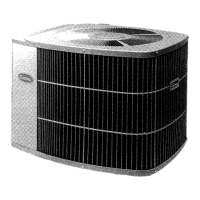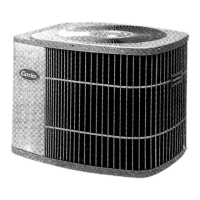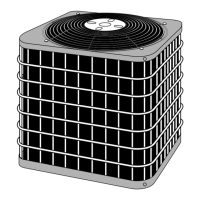For example:
outdoor unit 72 + 96, cooling indoor unit (12K x 6) + (18K x 6), T1 = 81⁰F, TS=70⁰F, T4=82⁰F
Max (T2A average, T2B average - 3) = 55⁰F.
T1 – TS = 81 – 70 = 11, so B = 3
T4 = 82, so C = 90%
Max (T2A average, T2B average = 55⁰F, so E = 3
QCi = ∑ (AxB) x C=(1.2 x 3 x 6 + 2.0 x 3 x 6)x 90% = 51.84,Round number:52
72 outdoor unit cooling capacity:QCo = QCix D / ∑D = 52 x 8 /(8 + 10)= 23.1,Round number:24
96 outdoor unit cooling capacity:QCo = QCix D / ∑D = 52 x 10 /(8 + 10)= 28.8,Round number:29
72 outdoor unit actual cooling capacity:QCr = QCo + E = 24 + 3 = 27,From the frequency table:70Hz
96 outdoor unit actual cooling capacity:QCr = QCo + E = 29 + 3 = 32,From the frequency table:80Hz
Table 8 -
Heating capacity calculation
Indoor unit
capacity (BTU)
Indoor unit
capacity x 100W
Indoor unit
capacity(HP)A
Indoor unit
capacity (BTU)
Indoor unit
capacity x 100W
Indoor unit capacity
(HP)A
6000 15, 17 0.5 36000 112 4.0
7000 22, 25 0.8 42000 125 4.5
9000 28 1.0 48000 140 5.0
12000 32, 36 1.2 54000 160 6.0
13000 40 1.4 60000 180 6.5
15000 45, 50 1.7 66000 200 7.0
18000 56 2.0 72000 224, 252 8.0
21000 63 2.2 96000 280 10.0
24000 71 2.5 120000 335 12.0
27000 80 3.0 144000 400 14.0
30000 90 3.2 168000 450 16.0
33000 100 3.6 192000 560, 580 20.0
QHi: Total heating capacity of indoor units
QHi=∑(AxB) x C (Round number)
24

